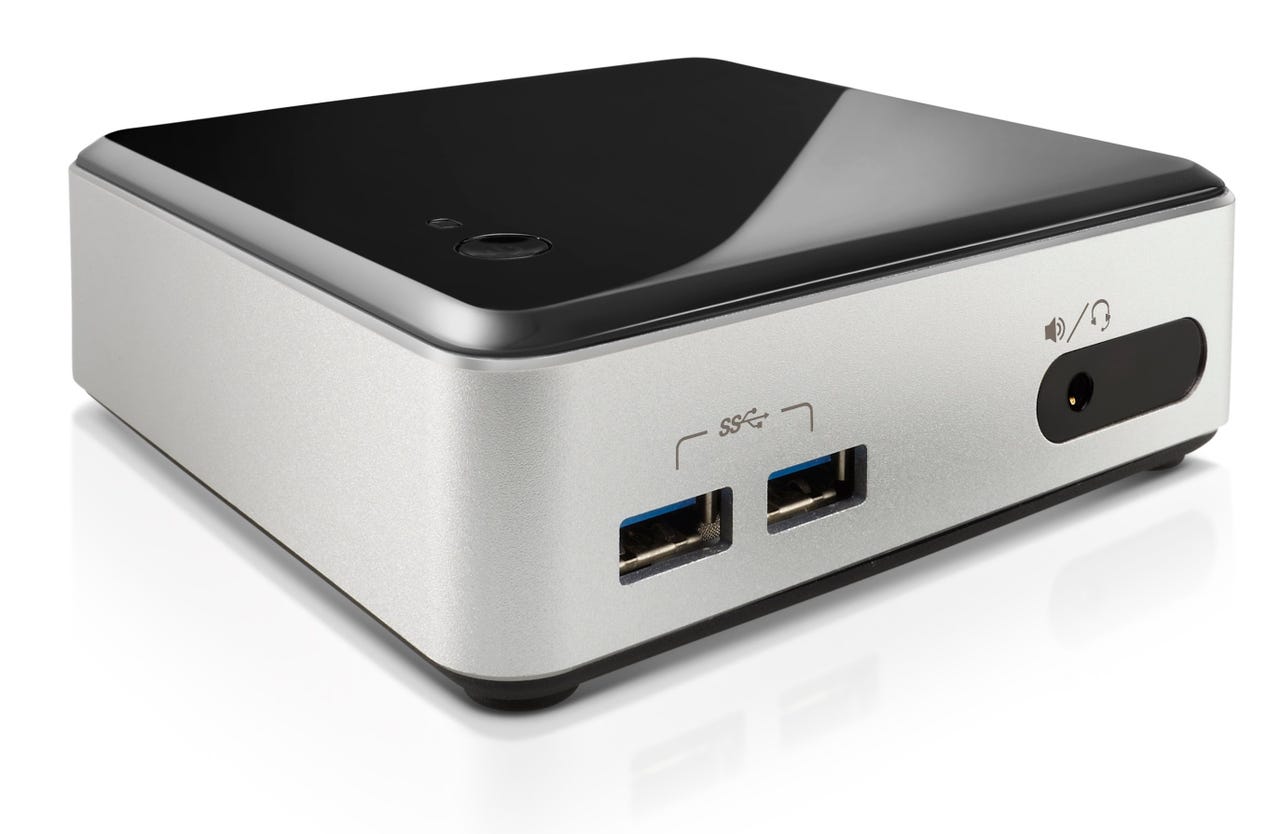Intel to supercharge NUC mini-PC with Skull Canyon edition


More CES 2016
Intel has made strides in helping to reinvent the PC with its Next Unit of Computing (NUC) systems, which are one of a number of tiny Windows computers that are shaped like the Mac Mini. The small size obviously limits the ultimate performance of these mini-PCs, as there's only so much room (and ability to dissipate heat) for components.
As a result, these pint-sized PCs are perceived to be for a budget buyer, or someone who values their tiny footprint over specs. Intel has been trying to change that perception, having introduced a NUC with a beefy Core i7 Broadwell CPU nearly a year ago. Now it's looking to go a step further with a forthcoming model that it hopes will appeal even more to the performance crowd.
The new NUC is being called "Skull Canyon" as a combination of "Skulltrail," Intel's one-time gaming platform, and "Rock Canyon," the code name of the NUC platform. The company confirmed its plans for the gamer-friendly NUC at CES, though it didn't formally announce any details.
The key specs for Skull Canyon are the inclusion of a quad-core Skylake processor and the built-in Thunderbolt 3 port. The new CPU offers support for speedy DDR4 RAM and features improved Iris Pro integrated graphics. However, they will only suffice for the most casual of gamer, and that's where the Thunderbolt 3 port comes in.
In the past, attempts to attach graphics cards via an external adapter have not proven to be popular, in part because interfaces haven't offered the bandwidth necessary to harness the power of the top desktop cards. But Thunderbolt 3 offers up to 40Gbps of data throughput (in comparison, USB 3.0 provides up to 5Gbps), which is leading to a renewed push to make external graphics support a viable option.
Already, Razer has announced Core, its Thunderbolt 3-equipped enclosure that can handle nearly any single graphics card AMD or Nvidia has made. While it's designed to accompany the company's Blade Stealth Ultrabook, it certainly could be an option for someone using a Skull Canyon NUC. Other external graphics solutions could also be in the works, perhaps even from Intel itself.
Adding more power to the NUC platform, however, starts to eat away at one of its selling points. The Skull Canyon version will be larger in other to provide more room to dissipate heat from the Skylake processor, and an external graphics solution would add another brick to your living room. Intel will have to negotiate the point where the NUC becomes too much trouble for a power user, who might just spring for one of the bigger Steam Machines with a built-in discrete graphics card instead. Since there's no specific price or release date attached to the Skull Canyon NUC yet, the chip giant has a bit of time to figure that balance out.